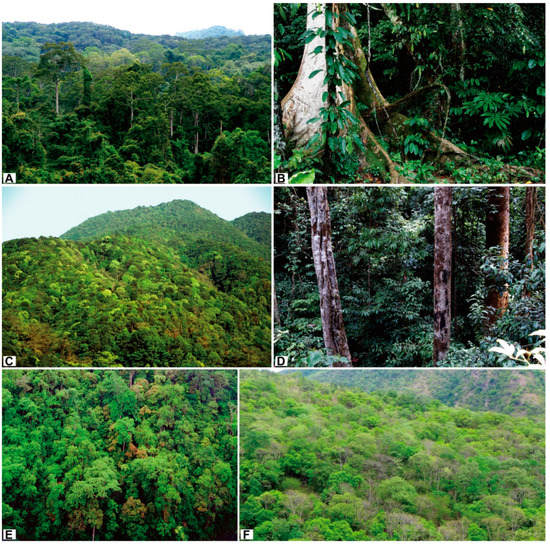Due to its exceptional geological, geographical and topographical features, Yunnan has evolved to have high biodiversity.
In a study published in Diversity, Prof. ZHU Hua and TAN Yunhong of Xishuangbanna Tropical Botanical Garden (XTBG) tried to review and clarify the diversity, origin, and evolution of the flora and vegetation of Yunnan.
The researchers combined community ecology and floristic plant geography to study types of vegetation, so as to give a better overall understanding of vegetation: not only its ecological and physiognomic features, but also its biogeographical sources.
In physical geography and biogeography, Yunnan is a transitional region located in the tropical SE Asia and subtropical-temperate East Asia and Himalaya. Located at the particular intersection between SE Asia, East Asia, and Himalaya, the possibilities for its biota origins are plentiful, because SE Asia, East Asia, and Himalaya offer it ample biodiversity sources.
In geological history, it has experienced geological events such as the extrusion of the Indochina geoblock, the fracture and dislocation of fragments of smaller geoblocks, and large rivers’ captures due to the uplift in the Himalayas. It also experienced the formation of a monsoon climate due to the Himalayan uplift.
In this unique geographical area, these geological events, monsoon climate formation and strengthening, and climate fluctuation evidently led to frequent species migration, isolation, and divergence, and to quicker-than-usual speciation.
Based on paleobotanical studies, the majority of the vegetation and flora in Yunnan may have formed during the period from the Oligocene to the Miocene. With a further uplift in the Himalayas, a topographically differential uplift, the strengthening of monsoon climates, and climate fluctuation after the Pliocene, the south–north vegetation and the flora differences increased, and west–east biogeographical divergence became clear.
“Abundant biodiversity has arisen and evolved accordingly in Yunnan,” said ZHU Hua of XTBG.
Contact
ZHU Hua Ph.D
Center for Integrative Conservation, Xishuangbanna Tropical Botanical Garden, Chinese Academy of Sciences, Menglun, Mengla, Yunnan 666303, China
E-mail: zhuh@xtbg.ac.cn

(A), Tropical rain forest in southern Yunnan; (B), understory of the tropical rain forest in southern Yunnan; (C), tropical lower montane evergreen broad-leaved forest in southern Yunnan; (D), understory of the tropical lower montane evergreen broad-leaved forest in southern Yunnan; (E), tropical seasonal moist forest on limestone in southern Yunnan; (F), tropical deciduous forest in southern Yunnan.

